2023 Scott Genius & Genius ST
Wheel Size: 29’’
Travel: 150 mm rear / 160 mm front
Frame Material: Aluminum and Carbon Fiber versions available
Geometry highlights:
- Sizes offered: Small – XL
Headtube angle: 64.5° (±0.6°) - Seat tube angle: 77.2° (size Large)
- Reach: 485 mm (size Large)
- Chainstay length: 440 mm (all sizes)
Price: Complete bikes: $3,800 to $12,000
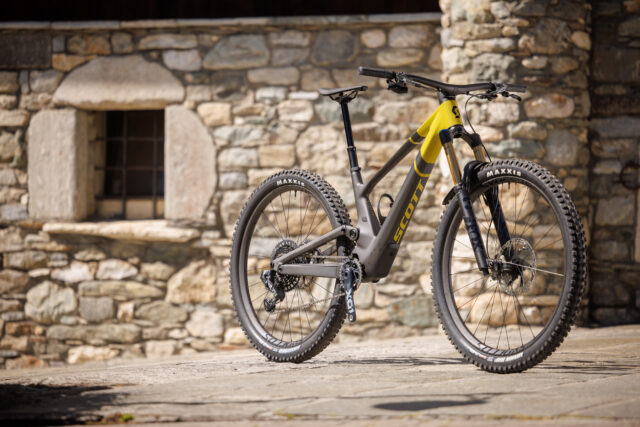
Intro
The Genius has been in Scott’s lineup for a while as their do-it-all 150mm-travel Trail bike, and they’ve just rolled out a new version. There’s a whole lot of wild stuff going on here, starting with the hidden shock layout — but that’s just the beginning.
The Frame
The new Genius isn’t the first bike we’ve seen with Scott’s “Integrated Suspension Technology” — their term for the hidden rear shock layout — but it’s still quite eye-catching. The design is borrowed from Bold Cycles, which Scott acquired a majority stake in a few years back, and the design is slowly creeping over to Scott’s model line, starting with the Spark, and with the Genius now following suit.
In short, the Genius uses a relatively conventional Horst-link suspension layout, but packages the shock inside a large compartment inside the seat tube / downtube junction, and actuates it with a rocker link that’s keyed into the external link through its pivot axle.
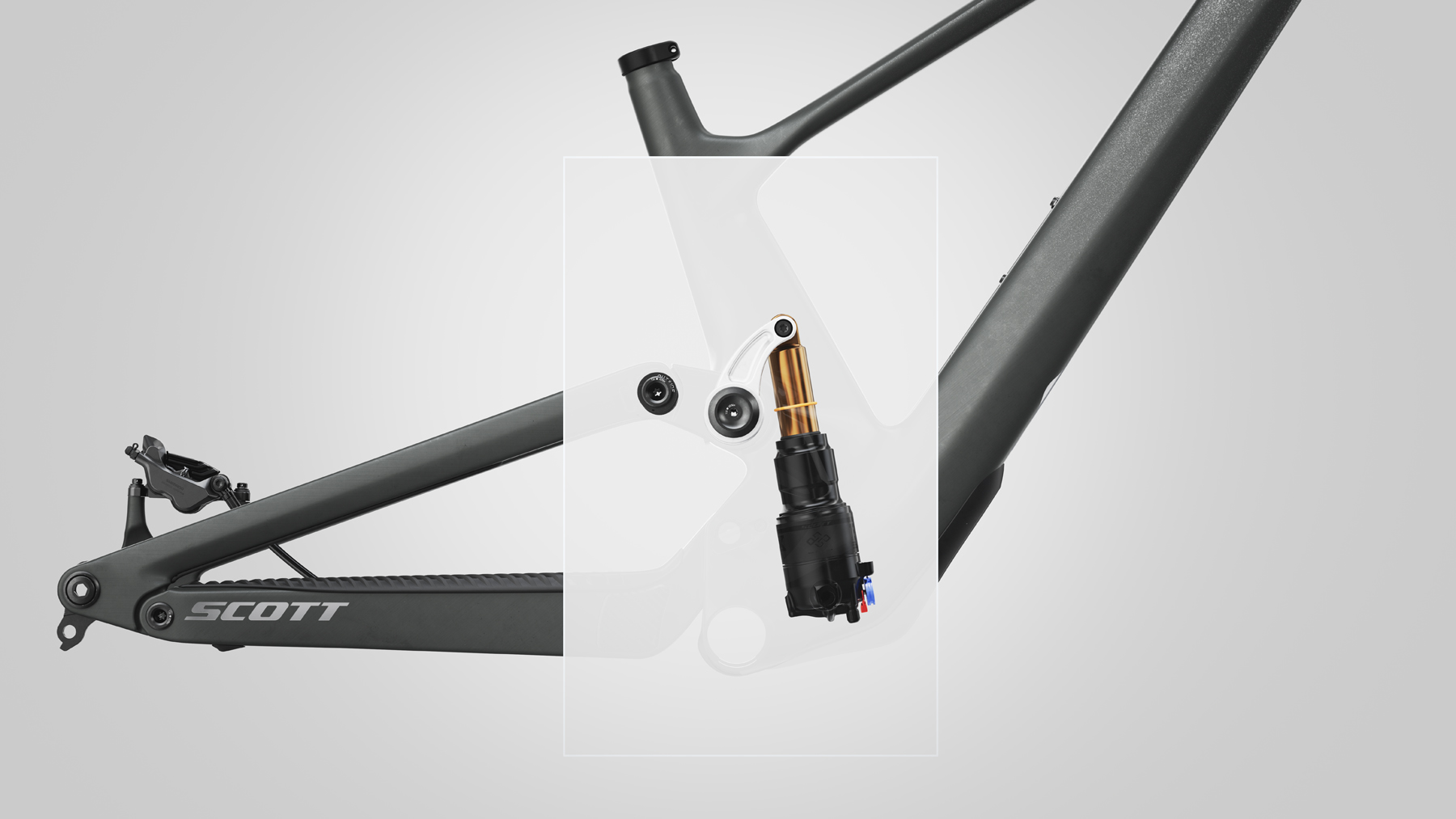
The shock is accessed through a large port on the bottom of the downtube, which is opened with the push of a button — no tools required. The upper shock bolt is hidden behind a port on the seat tube, and the lower Trunnion mount bolts are on either side of the downtube, just in front of the bottom bracket shell. A sag / travel use indicator is built into the rocker pivot on the non-drive side to compensate for not being able to see the typical shock shaft o-ring.
Scott offers two versions of the Genius, the standard model and the Genius ST, which actually doesn’t stand for “short travel” but instead means “Super Trail.” Both versions share the same frame (offered in aluminum, carbon front triangle / aluminum rear end, and full carbon versions) with the same 150 mm rear / 160 mm front travel. The main difference lies in the suspension spec choices, and those get pretty crazy, too.

The standard Genius uses Scott’s Nude 5T rear shock (in versions made by X-Fusion or Fox, depending on the build kit), connected to Scott’s TwinLoc remote, which toggles between three modes for both the fork and shock. “Descend” mode is self-explanatory — the fork and shock are opened up and work normally. “Traction Control” mode gets more interesting. Not only does the compression damping firm up on both ends, but the rear shock closes off a portion of its positive air chamber so that the rear suspension ramps up much more aggressively, and effectively makes the Genius into a ~110 mm travel bike. Not only does that make for firmer, more efficient feeling suspension, but it also increases the dynamic ride height of the rear end, adding bottom bracket clearance and steepening the headtube and seat tube angles (at sag). And finally, “Lockout” mode closes off the compression damping circuits further for maximum efficiency on smoother climbs. All of that is controlled by a remote on the left-hand side of the bar, and the fork and shock modes are tied together so that both are always in the same setting.
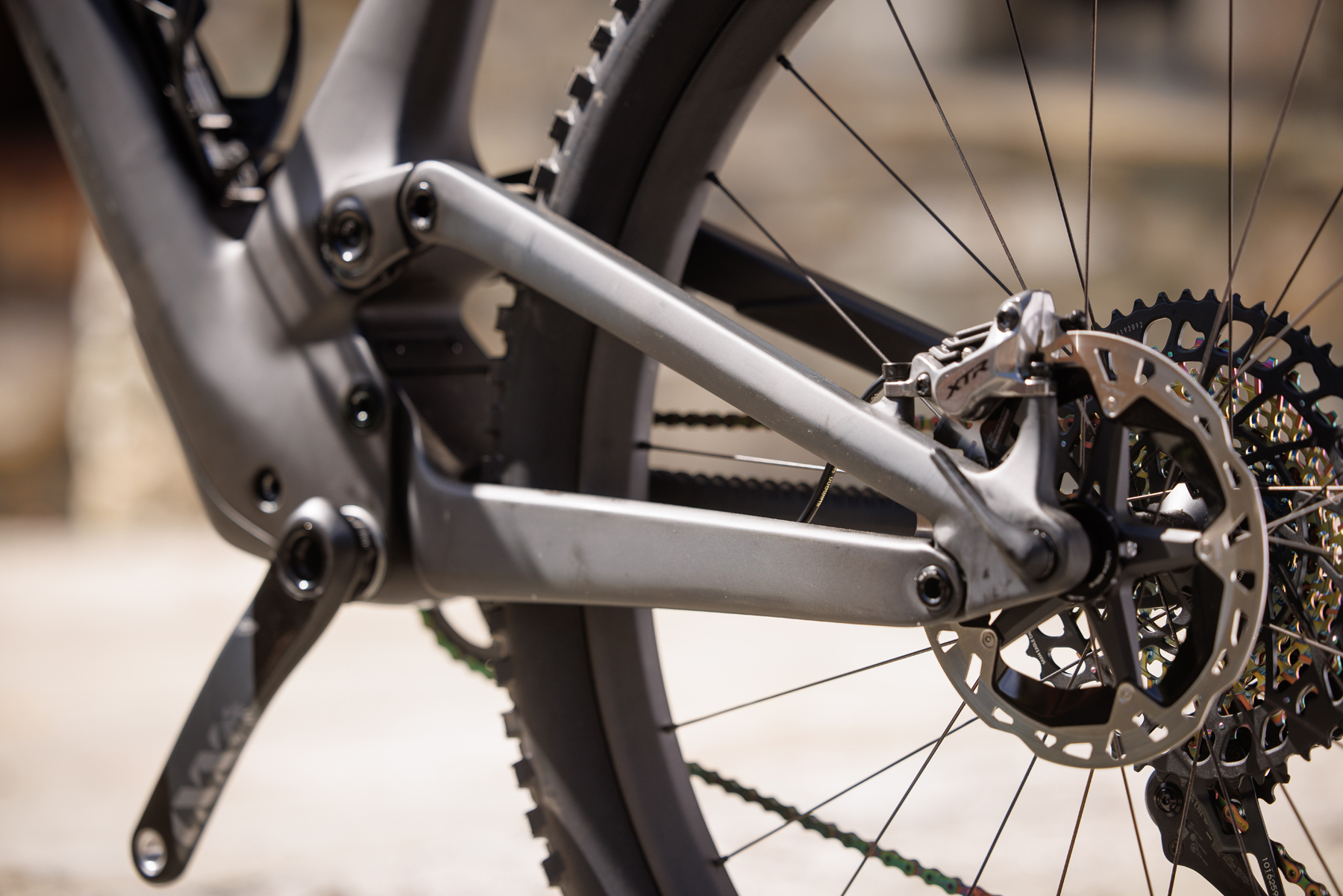

The Genius ST is meant for folks who want more downhill performance, and are willing to forgo some of the efficiency-minded details on the standard Genius to get there. Genius ST models forgo the TwinLoc remote in favor of a simpler TracLoc version, which only controls the rear shock — a Fox Float X Nude, with an external reservoir and adjustable low-speed compression and rebound.
The Float X Nude shock has three modes that work similarly to those on the Nude 5T, but with different goals in mind. “Descend” mode carries over, but Traction Control mode is replaced with “Ramp Control.” As with the Traction Control mode on the standard Genius, Ramp Control mode closes off a portion of the positive air spring to make the shock more progressive, but this chamber is much smaller than that in the Nude 5T shock on the Genius. Rather than limiting travel, the idea here is to make the suspension just a touch more progressive (akin to adding a volume spacer) to give the option for a more lively, poppy ride. Compression settings are unaffected in Ramp Control mode. And then finally, there’s a “Climb” mode which adds firmer compression damping for pedaling efficiency, though it stops short of being a full lockout.
All of that means that the Genius has a whole lot of cables, but Scott has gone to great lengths to hide them. All of the cables apart from the front brake hose are routed along the underside of the handlebar, and then the rear brake hose and the housings for the derailleur, dropper post, and rear shock cables are all routed through the headset (via a proprietary Syncros stem, or one-piece Syncros bar/stem combo, depending on the build) and into the frame. The housings are unguided through the downtube, relying on foam dampers and a few tie-downs near the bottom bracket area to stop them from rattling around.
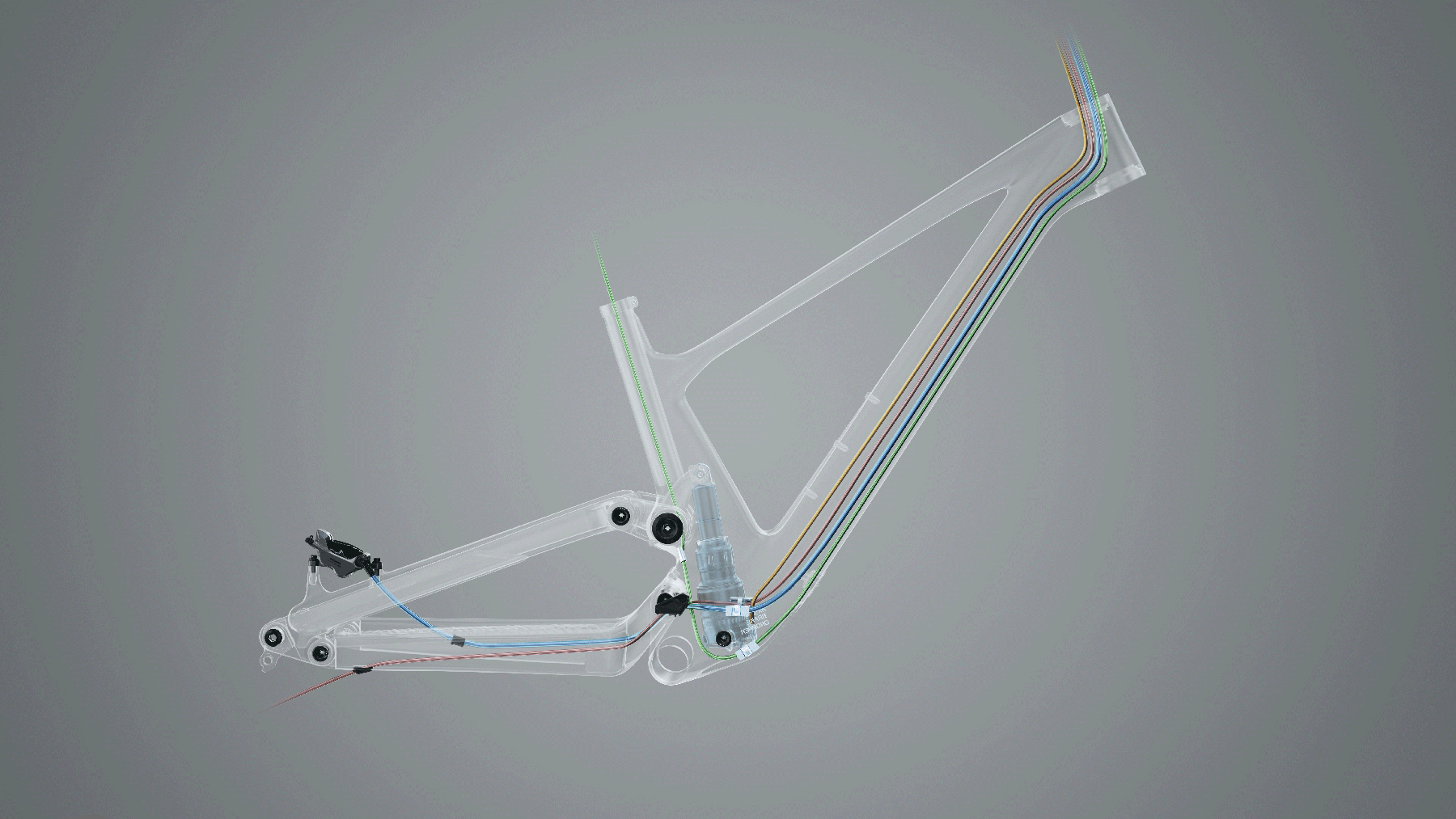
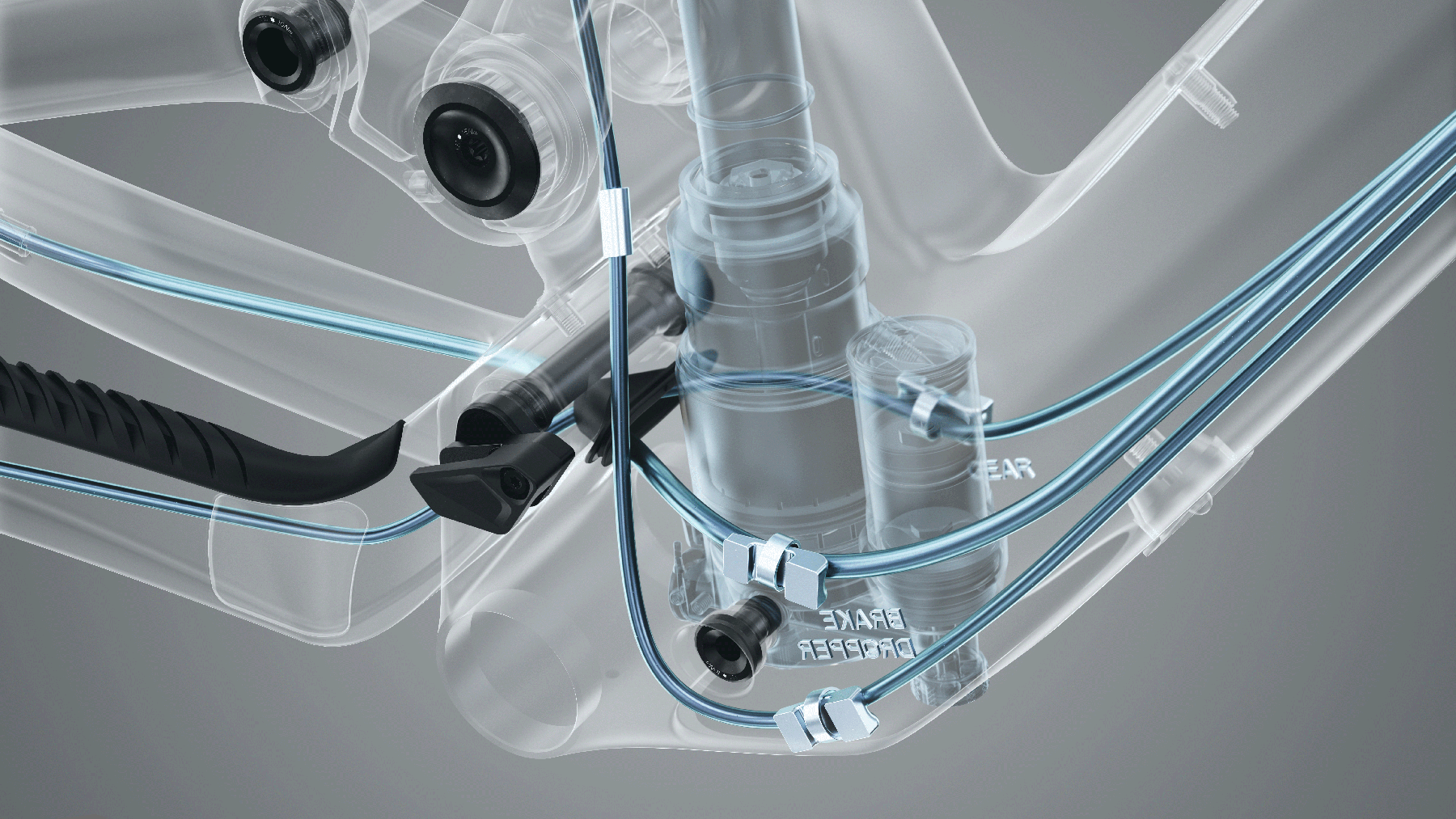
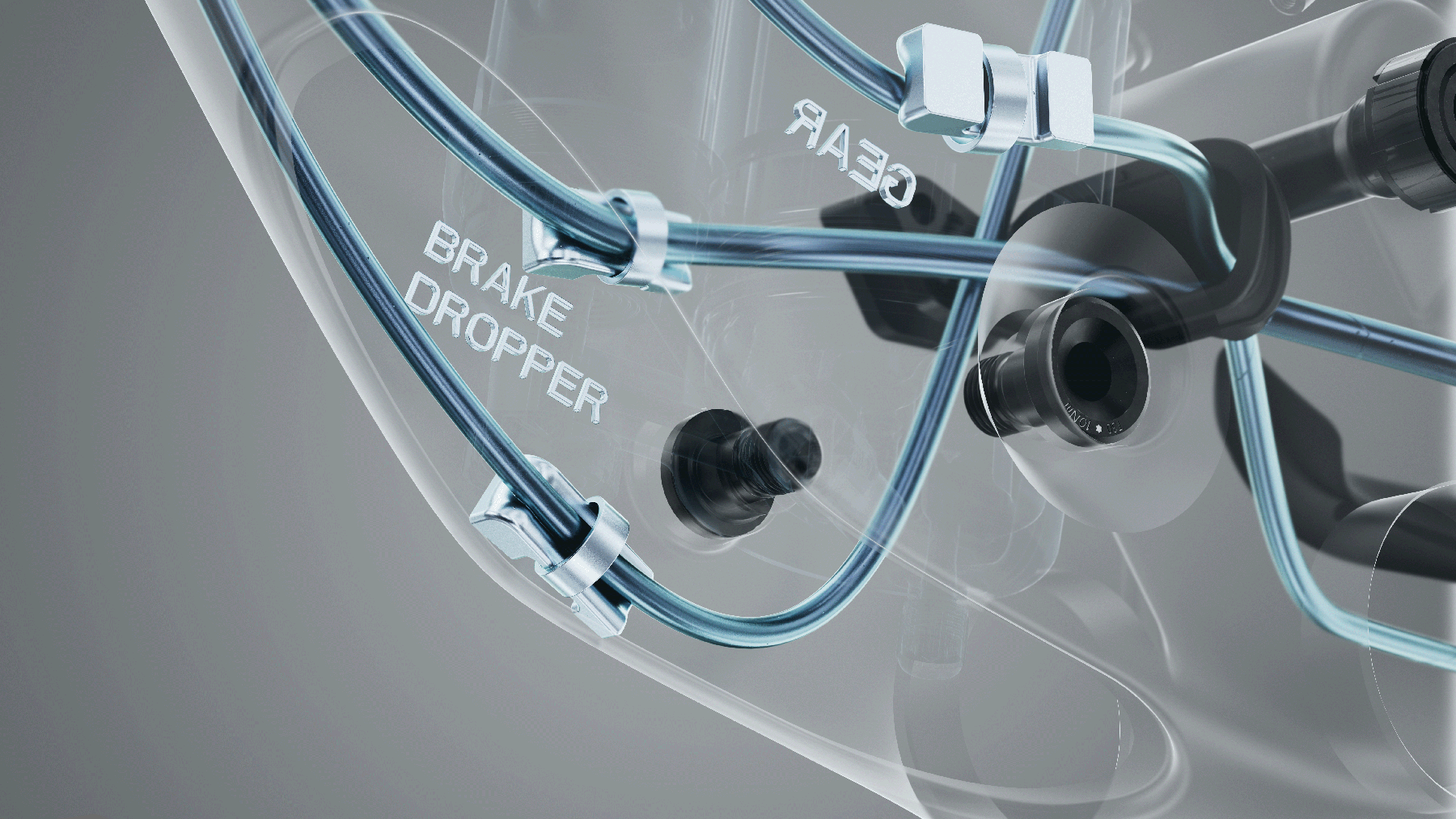
The Genius also comes with an offset headset that allows you to toggle the headtube angle by ±0.6° from a middle setting of 64.5°. The standard Genius comes with the headset in the steep position (65.1°) and the Genius ST comes in the slack one (63.9°) but both versions can be run in either configuration, and carbon-framed models also come with a straight headset to run the middle 64.5° setting. Toggling between the steep and slack settings can reportedly be done without messing with the cables, but swapping in the straight headset (or just replacing a headset bearing) presumably requires rerouting all of them and re-bleeding the rear brake due to the through-headset routing. I know I’m arguably a Luddite when it comes to internal cable routing in general, but this level of complexity strikes me as potentially becoming a real hassle.
The other frame details are more normal. The Genius uses a standard 148 mm Boost rear end (with a 55 mm chainline crankset), SRAM UDH derailleur hanger, PF92 press-fit bottom bracket, and a brake mount for a 180 mm rotor. Scott has also long been known for building especially light frames, and the Genius is no exception — the stated weight (without shock) for the full carbon Genius frame is just 2,295 g (5.06 lb), and Scott says that the top-tier Genius 900 Ultimate weighs just 12.8 kg (28.2 lb) complete — wildly light for a 150mm-travel Trail bike.
Fit & Geometry
Scott offers the Genius in four sizes, Small through XL, and they’ve grown substantially longer and slacker than the prior-generation bike. As noted above, the Genius ships with its adjustable headset in the steeper position (producing a 65.1° headtube angle) and the Genius ST comes with it set to the slack one (63.9°), but both bikes can be run in either position, and carbon-framed models come with a straight headset to run the intermediate 64.5° position. Reach ranges from 430 to 510 mm (460 mm for the Medium and 485 mm on the Large), the effective seat tube angle is around 77° (getting slightly steeper in the bigger sizes), and all sizes get the same 440 mm chainstays.
The Builds
Scott offers the Genius and Genius ST in eight total builds with prices ranging from $3,800 to $12,000. Genius builds come with the straight-body Nude 5T rear shock and forks with a climb mode (primarily Fox 36 Fit4s) while the Genius ST builds get a piggyback Fox Float X Nude rear shock and forks with more descending-focused damper options (e.g., Fox 36 Grip2s) but the builds are otherwise similar. All get Maxxis Dissector Exo MaxxTerra 2.6’’ tires at both ends.
The Genius 920 and Genius ST 910 are both available in Contessa versions — Scott’s term for their women-specific models — which come with different paint and a women-specific seat, but otherwise feature identical builds and pricing. Those Contessa models are available in sizes Small through Large.
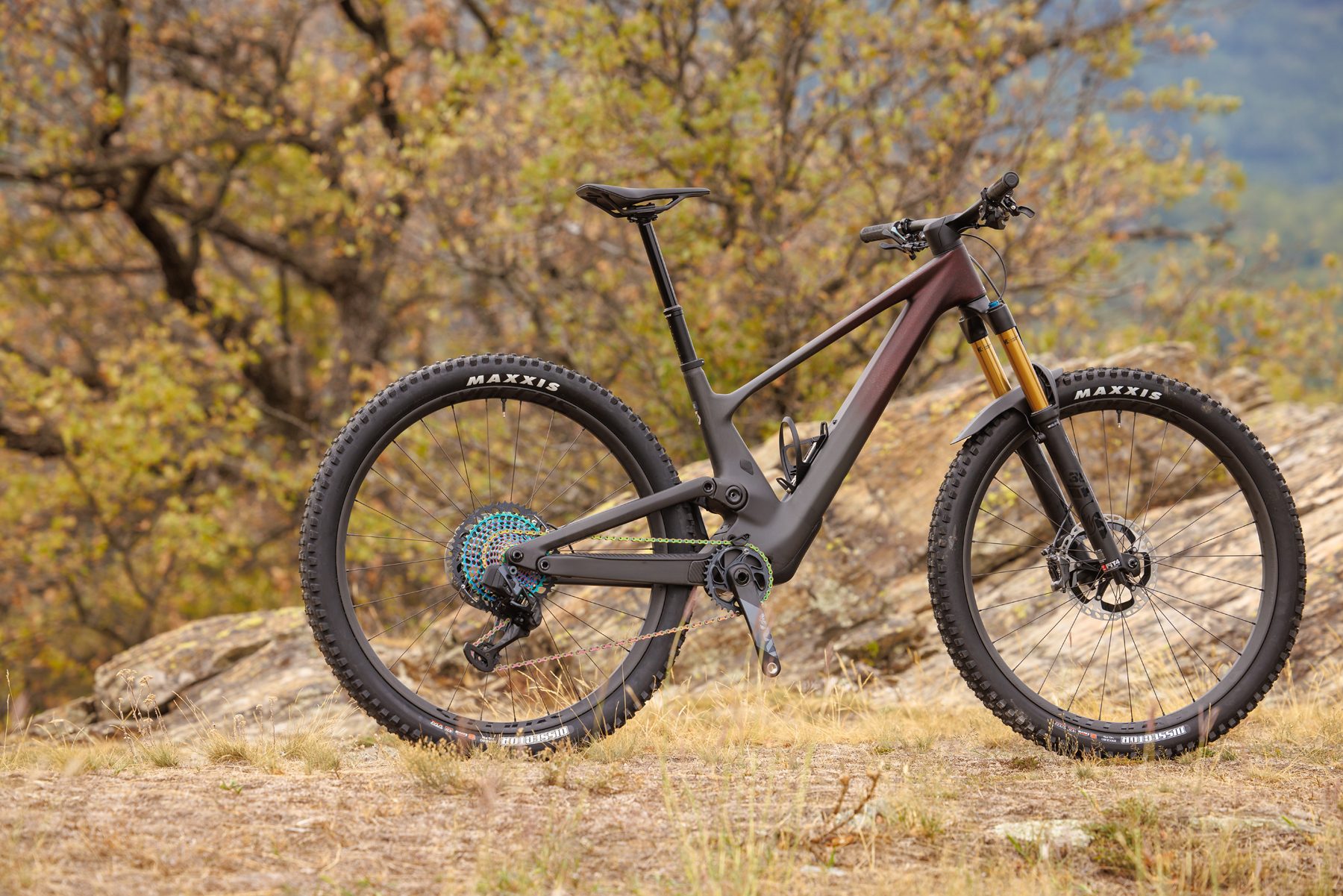
- Frame Material: Aluminum
- Fork: Marzocchi Z2
- Shock: X-Fusion Nude 5 RLX
- Drivetrain: SRAM SX w/ NX derailleur
- Crank: SRAM SX
- Brakes: Shimano MT501 w/ 203 mm front / 180 mm rear rotors
- Wheels: Syncros X-30S rims w/ Formula hubs
- Dropper Post: Syncros Duncan (S: 130 mm; M: 150 mm; L & XL: 170 mm)
- Frame Material: Aluminum
- Fork: RockShox Lyrik
- Shock: Fox Float X Nude
- Drivetrain: SRAM SX w/ NX derailleur
- Crank: SRAM SX
- Brakes: SRAM DB8 w/ 200 mm front / 180 mm rear rotors
- Wheels: Syncros X-30S rims w/ Formula hubs
- Dropper Post: Syncros Duncan 1.5 (S: 140 mm; M: 160 mm; L: 170 mm; XL: 200 mm)
- Frame Material: Aluminum
- Fork: Fox 36 Rhythm
- Shock: Fox Nude 5T
- Drivetrain: Shimano Deore w/ XT derailleur
- Crank: Praxis M24
- Brakes: SRAM DB8 w/ 200 mm front / 180 mm rear rotors
- Wheels: Syncros X-30S rims w/ Formula hubs
- Dropper Post: Syncros Duncan 2.5 (S: 125 mm; M: 150 mm; L & XL: 170 mm)
- Frame Material: Carbon fiber front triangle w/ aluminum swingarm
- Fork: Fox 36 Rhythm
- Shock: Fox Nude 5T
- Drivetrain: Shimano Deore w/ XT derailleur
- Crank: Shimano SLX
- Brakes: Shimano Deore 4-piston w/ 203 mm front / 180 mm rear rotors
- Wheels: Syncros X-30S rims w/ Formula hubs
- Dropper Post: Syncros Duncan 1.5 (S: 140 mm; M: 160 mm; L: 170 mm; XL: 200 mm)
- Frame Material: Carbon fiber front triangle w/ aluminum swingarm
- Fork: Fox 36 Performance Elite Fit 4
- Shock: Fox Nude 5T
- Drivetrain: SRAM GX AXS
- Crank: SRAM GX Aluminum
- Brakes: Shimano XT 4-piston w/ 203 mm front / 180 mm rear rotors
- Wheels: Syncros Revelstoke 2.0
- Dropper Post: Syncros Duncan 1.5 (S: 140 mm; M: 160 mm; L: 170 mm; XL: 200 mm)
- Frame Material: Carbon fiber front triangle w/ aluminum swingarm
- Fork: Öhlins RXF 36 m.2 Air
- Shock: Fox Float X Nude
- Drivetrain: SRAM GX AXS
- Crank: SRAM GX Aluminum
- Brakes: Shimano XT 4-piston w/ 203 mm front / 180 mm rear rotors
- Wheels: Syncros Revelstoke 2.0
- Dropper Post: Syncros Duncan 1.5 (S: 140 mm; M: 160 mm; L: 170 mm; XL: 200 mm)
- Frame Material: Carbon fiber
- Fork: Fox 36 Factory Grip2
- Shock: Fox Float X Nude Factory
- Drivetrain: SRAM X01 AXS w/ GX AXS controller
- Crank: SRAM X01 Carbon
- Brakes: Shimano XTR 4-piston w/ 203 mm front / 180 mm rear rotors
- Wheels: Syncros Revelstoke 1.0 carbon w/ TireWiz
- Dropper Post: Syncros Duncan 1.5 (S: 140 mm; M: 160 mm; L: 170 mm; XL: 200 mm)
- Frame Material: Carbon fiber
- Fork: Fox 36 Factory Fit4
- Shock: Fox Nude 5T Factory
- Drivetrain: SRAM XX1 AXS
- Crank: SRAM XX1 Carbon
- Brakes: Shimano XTR 4-piston w/ 203 mm front / 180 mm rear rotors
- Wheels: Syncros Revelstoke 1.0S carbon w/ TireWiz
- Dropper Post: Syncros Duncan 1.5 (S: 140 mm; M: 160 mm; L: 170 mm; XL: 200 mm)
Some Questions / Things We’re Curious About
(1) How do the wild TwinLoc (Genius) and TracLoc (Genius ST) remotes and their corresponding Nude shocks perform on trail? How do they change the suspension performance, and are there notable downsides / tradeoffs?
(2) And how different do the Genius and Genius ST feel, given their differences in suspension, and which sorts of riders will be best suited to each version?
Bottom Line (For Now)
The latest Scott Genius is a wild-looking new offering with some pretty out-there technology to match its looks, and we’re quite curious to get on one to see how it all adds up on trail. We’re working to make that happen, and will hopefully be able to find out more soon.

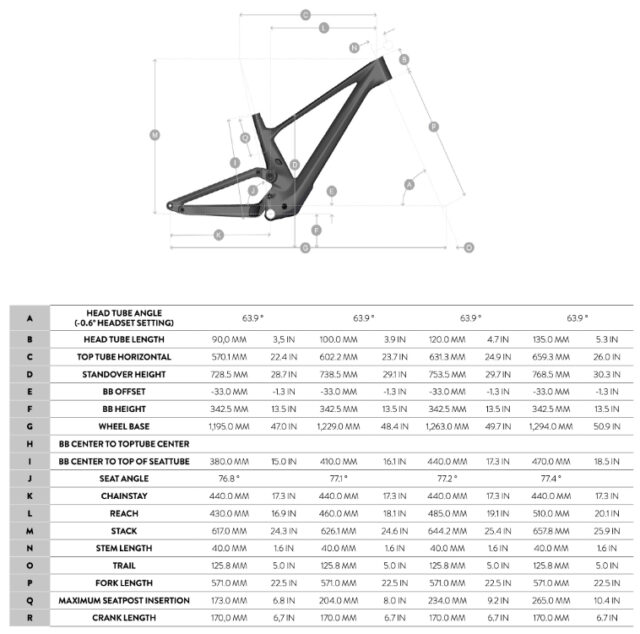
Ticks so many boxes for me, but oh the cables! Looking forward to the long-term review.
Geeky tech question: How do the standard Genius Fit4 forks work with Scott’s 3-position remotes? AFAIK Fox now makes the remote Fit4 with only a 2-position daming cartridge.
I love Scott’s innovation and love my 2017 Scott Spark, which I will now likely ride forever as the new Spark and Genius look like E-bikes. Which is something that no progress in the world could compensate for.